If you are organising an event to celebrate the International Year of Biodiversity, we encourage you to share your activities with us and everyone in your country. If you wish to see the information below in your official language, please send us a translation (.doc or .pdf) at [email protected].
If you have videos and photos of your celebrations of the International Year of Biodiversity, please send them to us!
Australia

National Celebrations
Autralia's Final Report for the International Year of Biodiversity 2010
The Australian Biodiversity 2010 website is a ‘biodiversity hub’ for events in Australia. Apply for funding, promote your biodiversity news and events, share your stories and ideas.
Activities for the International Year of Biodiversity (report by the Australian Government)
Biodiversity in Australia.
The Western Australia Government's Department of Environment and Conservation (DEC) has as its vision a healthy, diverse and well-managed environment. DEC employs some 1900 staff and manages more than 27 million hectares of lands and waters that make up Western Australia's system of national parks, marine parks and other protected areas, World Heritage sites, Ramsar wetlands and a renowned biodiversity 'hotspot' in the State's south-west. DEC carries out a great deal of biodiversity conservation work such as biodiversity mapping, the identification and recovery of threatened species, and many decades of widely respected scientific research.
The International Year of Biodiversity will be featured in the following: - LANDSCOPE magazine, an award-winning quarterly conservation, parks and wildlife publication now in its 25th year;
- Environment and Conservation News, a fortnightly electronic bulletin to DEC staff, volunteers and subscribers throughout Western Australia giving updates on important projects and achievements';
- Nuytsia, a journal produced by the Western Australian Herbarium, which resides within DEC, providing original scientific papers on systematic botany, with a particular focus on the flora of Western Australia;
- Conservation Science Western Australia, a journal of papers by scientists and technical officers employed by DEC, produced to foster awareness, understanding and support for the science on which the department's nature conservation and natural resource management activities are based;
- The History of the Western Australian Herbarium, a book to be published in June 2010;
- The DEC will have a new Biodiversity Conservation Science building, which will house the Western Australian Herbarium and which is due to be officially opened late in 2010.
This year, the Department of Sustainability and Environment is supporting the International Year of Biodiversity by raising awareness of the vital role that our natural living environment plays within Victoria. Furthermore, DSE is recognising the International year of Biodiversity by integrating existing metropolitan and regional campaigns and events to enhance biodiversity in Victoria. These include:
Zoos Victoria There are a range of other ways Zoos Victoria are helping you to help biodiversity this year.
 |
|
Act 4 Nature
Act 4 Nature is our latest campaign alongside our partners, Department of Sustainability and Environment, the Royal Botanic Gardens, Parks Victoria and Museum Victoria. In this year-long campaign celebrating the international Year of Biodiversity participants will pledge to take part in a particular target action each month, the outcomes of which promote conservation and sustainability. |
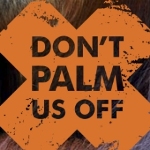 |
|
Don’t Palm us Off
The aim of this community campaign is to achieve mandatory labeling of palm oil in Australia, so we can then drive a consumer market for sustainable palm oil and help save the rainforests in Asia in particular which support animals such as the Sumatran tiger and the orang-utan. Over 80,000 people have signed our petition in support, and the campaign has inspired a bill to be entered into parliament which will be considered in May. Head to the website to find out how you can support the bill. |
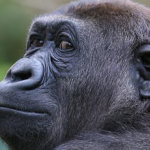 |
|
They’re Calling on You
Africa’s primates are calling on you to recycle your old mobile phones. By recycling your phone you help to lessen the demand for coltan, a metal mined within gorilla habitat and help raise funds to support primate conservation. |
AWMS Conference 2010 in Torquay Victoria Please click here to view the recent newsletter (12 November 2010) about the AWMS Conference 2010.
BIOdiverseCITY
1–18 April 2010 artists engage in the webs and the intertwinement of life in our urban worlds
Biodiversity: the diversity (number and variety of species) of plant and animal life within a region.
2010: The United Nations International Year of BIODIVERSITY
BIOdiverseCity: a group exhibition of contemporary art featuring 20-30 artists living and working in Sydney, Australia. Each artist has been asked to explore the biodiversity, and issues of biodiversity, of the environments that they traverse in the routines of their daily lives. From the parks and waterways, to the backyards and neighbourhoods, no stone will be left unturned (figuratively speaking) as artists engage in the webs and the intertwinement of life in our urban worlds.
More information / contact
The Perth Zoo will promote the International Year of Biodiversity to schools and their target audience. The Australian Museum will have an exhibition running from May to September, and will promote the International Year of Biodiversity by producing promotional materials in the form of leaflets and flyers.
Partners

Augusta Margaret River Tourism Association
www.margaretriver.com
The Augusta Margaret River Tourism Association Inc. is an innovative, progressive trade association with a network of over 450 members. The Association is a focused, cohesive organisation with high values fostering excellence in sustainable tourism. The Augusta-Margaret River Tourism Association (Inc) is a not for profit organization with a Committee of Management elected by the membership.

Australasian Wildlife Management Society
www.awms.org.au
The Australasian Wildlife Management Society (AWMS) promotes the study and application of scientific management of vertebrate fauna in the Australasian region. Australia and New Zealand have unique faunal biodiversities, much of which is threatened by predation and habitat change by humans, altered fire regimes, invasive species and climate change. AWMS, established in 1988, encourages the broader community to scientifically develop and implement plans to manage our fauna, and to review these plans within social, environmental, economic and political contexts. AWMS people include scientists, educators, students, wildlife managers, extension specialists and policy makers from all over Australia and New Zealand, and from other countries.

Australian Science
www.australianscience.com.au
Australian Science is a privately-funded foundation dedicated to the online preservation of digital information, reference data, and scientific materials. Our aim is to establish a unified list of libraries, universities, and technology centres equally dedicated to this goal. Australian Science is one of the key partners within the network committed to the advancement of science both in Australia and worldwide.
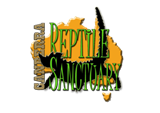
Canberra Reptile Sanctuary
canberrareptilesanctuary.org.au
The Canberra Reptile Sanctuary is a not for profit association dedicated to research, conservation, and education and achieves these goals through public talks, the exhibition of reptiles, and research with affiliated Universities. Reptiles form a major part of the Australian landscape and are highly responsible for Australia being listed as one of the 17 Megadiverse countries of the world, thus, the Canberra Reptile Sanctuary has a strong focus on delivering this message so that people understand what we have, and live side by side with such amazing creatures.

Council of Australasian Museum Directors (CAMD) International Year of Biodiversity project
www.biodiversity2010.org.au
During 2010, as part of the Council of Australasian Museum Directors (CAMD) International Year of Biodiversity project, museums across Australia are working with people and communities to discover, celebrate and promote biodiversity, and encourage participation in biodiversity events all around the country.
- We are encouraging community groups to apply for seed funding of up to $5000 to establish programs that encourage Australians from all walks of life to explore the role of biodiversity in sustaining vital natural systems, and as a source of inspiration and cultural identity.
- We have a Biodiversity2010 website which Australians can use to promote biodiversity news and events, share biodiversity ideas, stories, photos and videos, and find events and resources relating to biodiversity. We also have a Twitter site: http://twitter.com/bio2010aus
We are encouraging people to contact us and become part a world-wide effort to increase awareness of biodiversity and its importance, and to engage more people in its conservation.

Fauna & Flora International
www.fauna-flora.org
FFI protects threatened species and ecosystems worldwide, choosing solutions that are sustainable, based on sound science and take account of human needs. Operating in more than 40 countries worldwide – mainly in the developing world – FFI saves species from extinction and habitats from destruction, while improving the livelihoods of local people. Founded in 1903, FFI is the world’s longest established international conservation body and a registered charity. Fauna & Flora International is the world's longest established international conservation body, founded 100 years ago. Renowned for its science-based approach, FFI has pioneered sustainable conservation work that tackles problems holistically, providing solutions that simultaneously help wildlife, humans and the environment.<p>FFI acts to conserve threatened species and ecosystems worldwide, choosing solutions that are sustainable, based on sound science and compatible with human needs FFI protects threatened species and ecosystems worldwide, choosing solutions that are sustainable, based on sound science and take account of human needs. Operating in more than 40 countries worldwide – mainly in the developing world – FFI saves species from extinction and habitats from destruction, while improving the livelihoods of local people. Founded in 1903, FFI is the world’s longest established international conservation body and a registered charity.

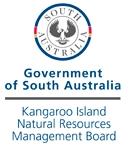
Kangaroo Island Natural Resources Management (NRM) Board - Australia
www.kinrm.sa.gov.au
The Kangaroo Island Natural Resources Management (NRM) Board is responsible for managing, protecting and restoring Kangaroo Island’s unique natural resources. It is the peak strategic body responsible for planning and coordinating regional natural resources management.
Kangaroo Island retains 40% native vegetation, native animals abound, some rivers are classed as the most pristine in South Australia, and we are rabbit and fox free.
The Board works with its community to protect and preserve water, land, biodiversity, and coast and marine environments. Its program areas are: coast and marine, feral animals and weeds, on-ground works, water resource management and community knowledge building.
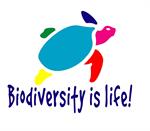
Nature Skills
www.biodiversityislife.com.au
The Biodiversity is Life website is for young Australians to publish school and after-school biodiversity learning activities, views, ideas and plausible solutions for Australia's conservation challenges, and to learn about biodiversity from other young contributors on the website. We hope that through increased learning opportunities about the environment and ecosystems, young people will be inspired to take meaningful action as stewards of Australia's biodiversity.


New South Wales National Parks - Australia
www.environment.nsw.gov.au/NationalParks
The New South Wales National Parks and Wildlife Service (NPWS) has a long and proud history of protecting, conserving and managing an extraordinary diversity of flora, fauna, historic and cultural heritage around the state of NSW, for future generations to appreciate and enjoy. There are close to 800 national parks and reserves across NSW, including parks in four World Heritage Areas and six marine parks. In support of the 2010 International Year of Biodiversity, NPWS has launched Wild, Wild World, a campaign aiming to increase awareness of biodiversity and interaction with the natural environment. The campaign highlights a wide range of walks, talks and tours in NSW’s national parks throughout the year. Encouraging participation in national parks, and exposing people to the natural beauty around them will help build knowledge about the importance of biodiversity while inspiring engagement with, and advocacy for, the environment. Visit wildwildworld.com.au


Parks Victoria - Australia
www.parkweb.vic.gov.au
It is through the interaction of Healthy Parks and Healthy People that the immense public value and conservation of our natural estate is fully realised. Healthy Parks Healthy People is about protecting the earth’s two most important assets – nature and humanity.
[b]
Parks Victoria exists to conserve, protect and enhance environmental and cultural assets. By responsibly meeting the needs of our community for quality information, services and experiences we contribute to the social and economic wellbeing of Victorians and provide excellence and innovation in park management
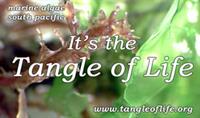
Tangle of Life
www.tangleoflife.org
Our interactive website TANGLE OF LIFE showcases “the wealth of the world in the kingdoms of life”. Find the best from biology about bacteria, protoctists, fungi, animals, plants and the archaea. Join in our IYB2010 special photo project "Our Great Wealth Display." The website uses “social media for natural good” to reach 5 million people with messages about local biodiversity.
For a sneak-peak, please click this link: Free Ebook


Taxonomy Research & Information Network - Australia
www.taxonomy.org.au
The CERF Taxonomy Research & Information Network (TRIN) consists of a group of leading Australian scientists in the field of taxonomy, the science that identifies and names biodiversity, who are working together to address gaps in our knowledge of Australia's biodiversity.
Research focuses on small terrestrial mammals, reptiles, and aquatic invertebrates, ants and weeds of national significance. The work is also improving the way baseline information is made available to end users, such as researchers, governments, universities and industry. This research network aims to be a global leader in delivering web-based information on taxonomy, and moving towards the creation of a 'one stop shop' for assessing key information on Australia's biodiversity.
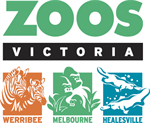
Zoos Victoria
www.zoo.org.au
Conservation is at the heart of everything we do at Zoos Victoria. Our community conservation campaigns make it easy to take action to help the precious biodiversity around the world. Check out what you can do right now help protect wildlife, from Australia’s very own Southern Bell Frog, to the orang-utans of Asia and Africa’s mountain gorillas.
|